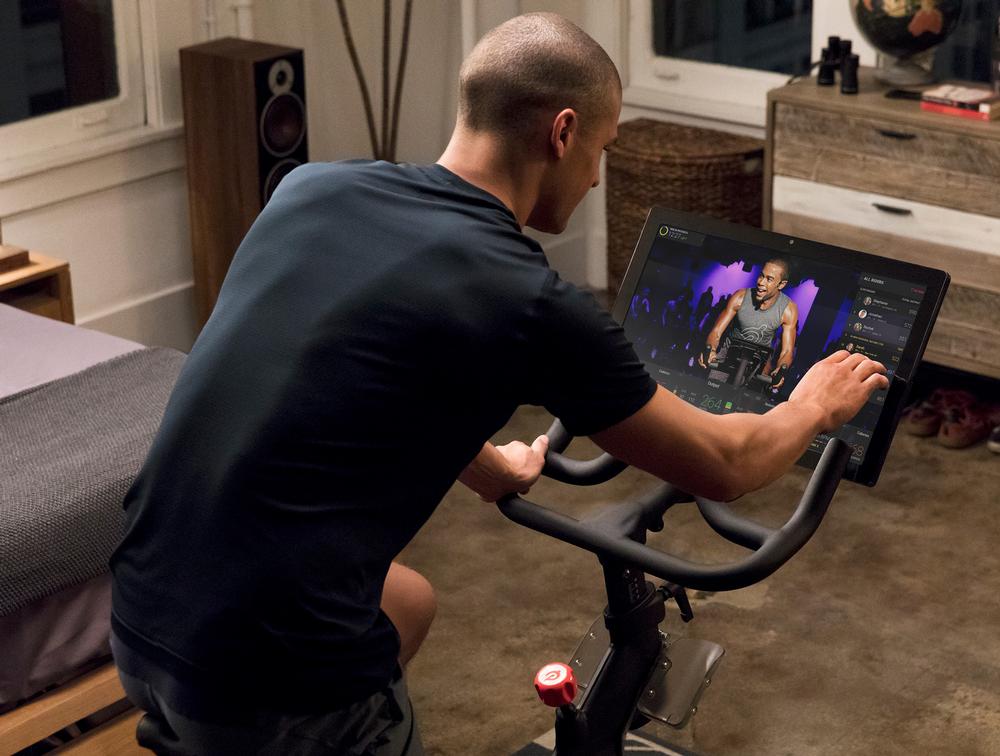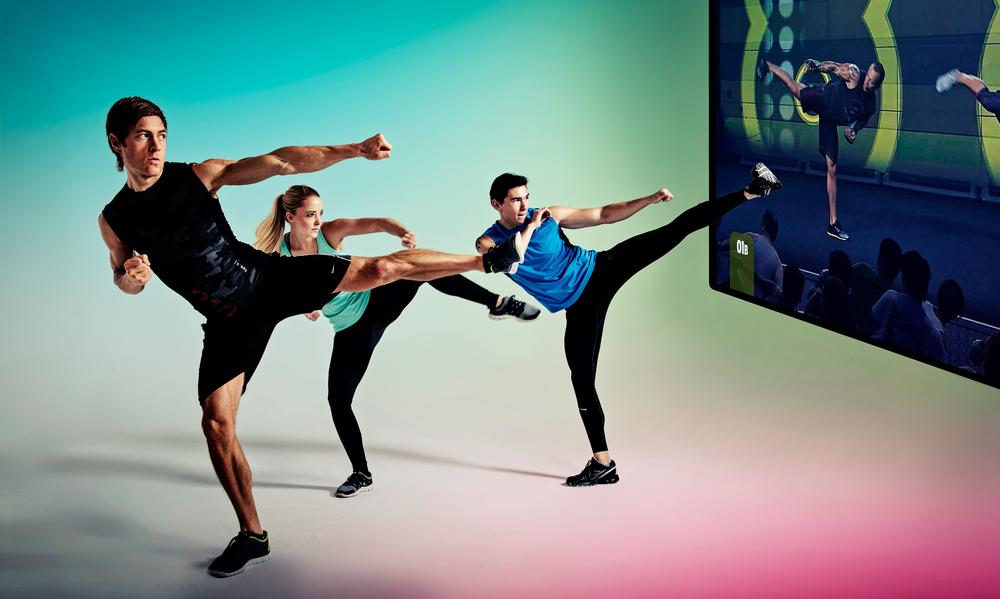Fitness experiences continue to evolve as the result of advancing technologies, the ever-growing need to create sustainable business models and more heightened consumer expectations. On-demand, streaming fitness content is just one example of this ongoing change – and it’s starting to impact the entire health and fitness landscape across the globe.
Pedal to Success
A great example of what’s underway from a consumer standpoint is Peloton – the indoor cycling company that raised US$325m from leading venture capital firms since starting up in 2012.
This company is just one of the business models taking advantage of increased consumer interest in on-demand fitness experiences. Users simply buy and install the indoor bike at home, before interacting in daily classes live streamed from the NYC studio to their large HD touchscreen. Instructors taking the studio class can even view participants’ performances and interact with them in their homes. Studio class access is available to the household.
The company, now considered a Unicorn with a valuation of more than US$1bn, is growing fast. Peloton tripled annual revenue to more than US$170m, with 100,000 paying subscribers, in 2016.
Get Fit On Demand
Peloton isn’t the only consumer digital fitness brand seeing a surge in their business and interest from investors. From DailyBurn to BeachBody On Demand, underlying consumer trends along with the rapid growth of reliable technology tools are enabling a fitness industry revolution which is only just getting underway. These new digital experiences are a phenomenon redefining what it means to deliver superior fitness experiences while simultaneously disrupting multiple other fitness sectors, such as in-home, in-boutique and in-gym class fitness, in addition to their connected media devices.
In the US, payments for on-demand fitness services jumped to 7.7 per cent of total spending on workouts in 2016, up from 4.8 per cent two years earlier according to marketing software company Cardlytics, which analyses consumer spending based on credit card data. In fact, spending for on-demand fitness now exceeds spending at yoga and Pilates studios in the US, according to the data collected.
Traditional gyms still command the overwhelming majority of workout spending, but that share fell to about 73 per cent in 2016 from nearly 78 per cent in 2014. What is notable is that US consumers who used on-demand fitness for the first time in 2016 spent 37 per cent of their total fitness budget on these services, according to Cardlytics. They spent nearly 40 per cent of their workout budget at traditional gyms, and the rest on fitness boutiques. A year earlier, those on-demand fitness users had spent nearly 67 per cent of their exercise dollars on gyms. The shift in consumption is underway and on-demand streaming services are playing a big part.
Convenient Streaming
US data translates to other developed markets like the UK, where technology adoption and consumer trends are taking a similar track. Streaming content from music to games and videos is up overall. On-demand audio streams reached more than 184 billion through the first half of 2017, a considerable 62.4 per cent increase over the same period last year, according to Nielsen’s Music Mid-Year 2017 Report.
Meanwhile, overall on-demand streams, including video, surpassed 284 billion streams in 2017, an increase of 36.4 per cent over the same period in 2016. A key driver behind the demand for streaming content is convenience – the new capital. Users simply want what they want when they want it in the easier manner possible.
The trend for streaming fitness experiences isn’t isolated to at-home or smartphone-based applications. Health clubs, gyms and other fitness centres are re-engineering their offerings to include digital classes and experiences, both inside and outside their clubs. Economics are a big driver of digital innovation in clubs as labour costs, underutilised studio space and consumer digital expectations drive smart health club brands to rethink and redeliver services with digital offerings in mind.
With respect to rethinking service, companies offering customers numerous ways to interact whenever and wherever they wish is key. Commonly referred to as “omnichannel”, successful brands adopt a holistic view by delivering a seamless customer experience across all channels – both digital and physical.
Omnichannel importance
One of the world leaders in helping bricks and mortar fitness brands extend their experiences into the digital space is Wexer. Active in more than 40 countries, Wexer offers a suite of solutions for health clubs, gyms and its members. In-club content for on-demand in-studio experiences and for on-demand workouts via tablets and mobiles, in addition to other content products and services, is a primary focus for many global fitness facility brands that Wexer serves, from 24 Hour Fitness to Fitness First and many more.
As with the retail sector, fitness brands that own bricks and mortar are coming to grips with the importance of “omnichannel” – delivering services to members both inside and outside the club environment. Solution providers like Wexer are filling the void by offering platforms and content that can address this need. Their solutions even offer a means of broadcasting live or recorded original content from the gym studio directly to the member.
Artificial Workouts
The move to digital content isn’t going to stop with streaming content. The next phase is the alchemy of data, automation, cognition and content which combined will deliver new types of experiences. For example, the integration of workout data including sleep, heart rate and other variables could customise content and workout experiences for specific users to optimise outcomes. In fact, the day will come when digital avatar coaches deliver personalised training based on data they’ve collected over time. The ultimate implications of cognition or artificial intelligence (AI) for fitness are just beginning to emerge. Their combination with great content will elevate the user experience significantly.
A recent interview on the Fitness Industry Technology Council’s podcast with John C. Havens, executive director of the IEEE Global AI Ethics Initiative, explored how this new era of fitness is likely to emerge. In the podcast, Artificial Intelligence in the Fitness Industry, Havens reminds listeners to consider AI a key factor in how the fitness industry will improve user experience. In a world of multiple data sets, unending types of content and limitless sensor devices, John believes that what will separate the great fitness companies from the good is how they use AI to achieve the most intuitive, valuable and simplistic user experiences for their customers.
Immersed in Reality
In addition to how content is currently being streamed and how it will be streamed in the future, the eventual evolution of augmented and virtual reality will move experiences to an entirely new level as people become even more effectively immersed in the content experience.
Operators will also begin to understand the drive for advanced personalisation with gamification, and AI as a key variable in offering great personalised programming – of which great content will play its part, be it inside or outside the fitness facility.
Regardless, the new era of how members interact with the fitness industry is here and high-quality omnichannel content is a big part of the equation.
As health and fitness brands navigate the implementation of these tools, keep an eye out for the continued shift towards quality user experiences that are better personalised and more and more attuned to consumer convenience.


























































